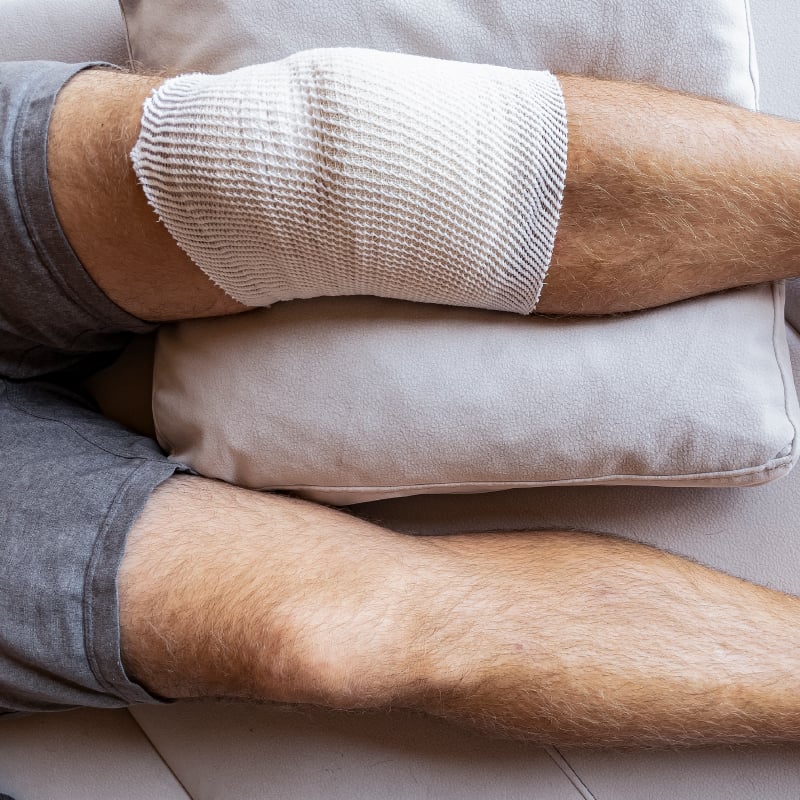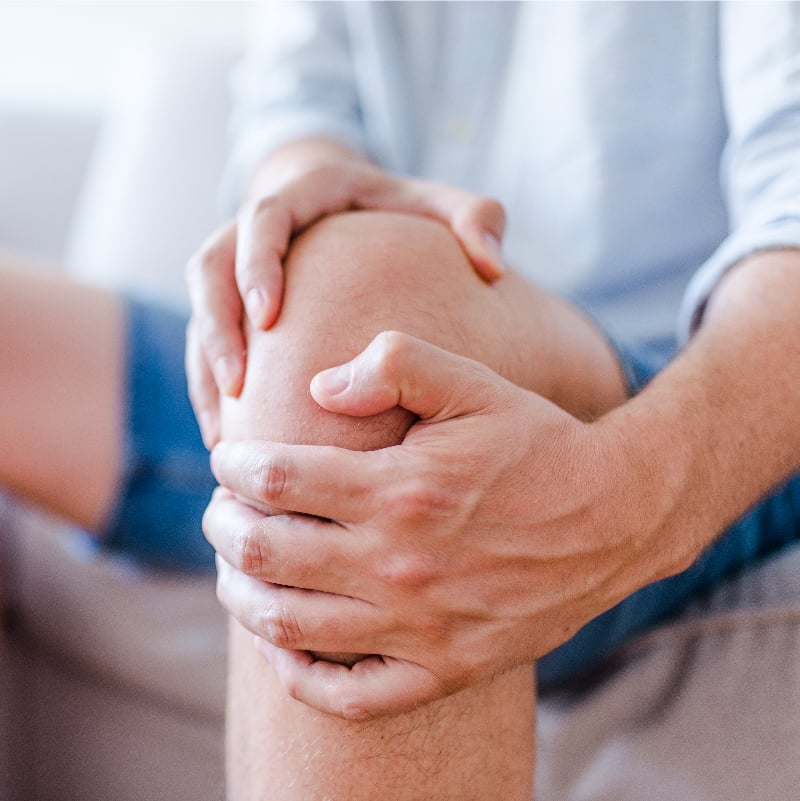People experience back pain and discomfort for a variety of reasons, especially as they grow older. One of the most common sources of back pain is a herniated disc.
Our spines have a series of bones—or vertebrae—that are separated by round, cushions called discs that act as buffers, helping us bend and move with ease. When one of these discs ruptures, it’s called a herniated disc.
Herniated discs can happen anywhere along the spine, but most commonly occur in the lower back (lumbar) or neck (cervical).
Dr. Christian DiPaola, an orthopaedic spine surgeon with Rochester Regional Health, tells us five things to know about lumbar herniated discs.
1. Not everyone experiences the same symptoms
A range of symptoms can accompany a herniated disc that can vary from person to person. Symptoms can range from mild to severe, depending on the location and whether or not the disc is pressing on a nerve or the spinal cord.
Symptoms can include:
- Pain. Lumbar disc herniations typically cause lower back or buttock pain. In more severe cases, it may radiate to the thighs, lower legs, or feet. Cervical spine disc herniations can cause pain to the arms and, in some cases, to the legs and feet.
- Tingling. A herniated disc may cause a tingling feeling that results from one or more nerves being compressed. For lumbar disc herniations, pain typically radiates to the legs or feet.
- Loss of sensation or strength. In more severe cases, people may experience numbness, weakness, or loss of strength that could affect their ability to walk.
- Loss of bowel or bladder control. Due to compressing of nerves or portions of the spinal cord, herniated discs may cause loss of bowel or bladder control.
“Patients can experience any combination of symptoms at varying levels of severity. It’s important to get in touch with your primary care physician or a spine specialist if you’re experiencing any symptoms of a herniated disc,” said Dr. DiPaola.
2. Herniated discs are not always caused by trauma
Herniated discs don’t typically arise from one specific trauma or injury. Commonly, herniated discs occur as a result of day-to-day activities.
“Think of lumbar discs like car tires. There isn’t always one offending agent that causes a car tire to go flat. Often it’s an accumulation of wear and then a sudden episode, explains Dr. DiPaola.
“The same is true for discs in your spine—they can experience degeneration with age or from normal use. Some people may experience a gradual onset of symptoms while others recall a specific event or time of onset.”
3. There’s no guaranteed way to prevent herniated discs
While there is no guaranteed way to prevent a herniated disc, there are good habits that can help strengthen your back muscles and keep your spine healthy.
- Practice good posture.
- Use proper lifting techniques, like bending at your knees and holding heavy items close to your body while lifting.
- Stretch often, especially while sitting for long periods.
- Exercise regularly to strengthen your back, abdomen muscles, and leg muscles. These are your body’s support and foundation.
- Maintain a healthy weight to reduce pressure on your lower back.
4. Everyone’s treatment plan is different
Treatment plans for herniated discs depend heavily on the type and severity of symptoms. Working with a spine specialist for a proper diagnosis will help to determine which treatment is best for you.
There are three main categories of treatment for herniated discs: physical therapy, medication, and surgery.
Physical therapy is the most common treatment that the majority of patients are candidates for. Physical therapy programs are geared towards the specific type of disc herniation and can include strengthening, flexibility, and conditioning to help patients address various pain and functional patterns.
Medication is another treatment option for herniated discs. A physician may prescribe medications such as acetaminophen, naproxen, prednisone, or ibuprofen. In some cases, medications can be delivered through injections using x-ray guidance.
Surgery may be recommended to treat severe or unremitting cases. Surgery is generally the first-line treatment for patients who are experiencing loss of strength and/or sensation, loss of bowel control, or loss of bladder control as a result of their herniated disc.
“Surgery is also a treatment option for those with persistent sciatica symptoms despite attempts at physical therapy or medications," said Dr. DiPaola.
What is sciatica?
Sciatica refers to pain that radiates along the sciatic nerve, which branches from your lower back through your hips, buttocks, and down each leg. Sciatica typically affects only one side of your body.
5. 90% get better without surgery
In many cases, symptoms among those with herniated discs are relieved through conservative treatment, such as physical therapy and medication.
“If a patient’s main symptoms are pain and discomfort and they are not experiencing loss of sensation or strength, they can likely be treated with physical therapy, home exercise, medication, and time. Around 90% will improve within a few months.” said Dr. DiPaola.
There are a few different remedies patients can try at home to relieve symptoms of a herniated disc:
- Avoid long periods of bed rest
- Take an over-the-counter pain reliever, such as ibuprofen or acetaminophen
- Apply heat or ice to the problem area
- Stretch and stay mobile.
“If symptoms persist after a few weeks, worsen, or you find yourself struggling with day-to-day activities, contact your primary care physician or a spine specialist for an exam.”









